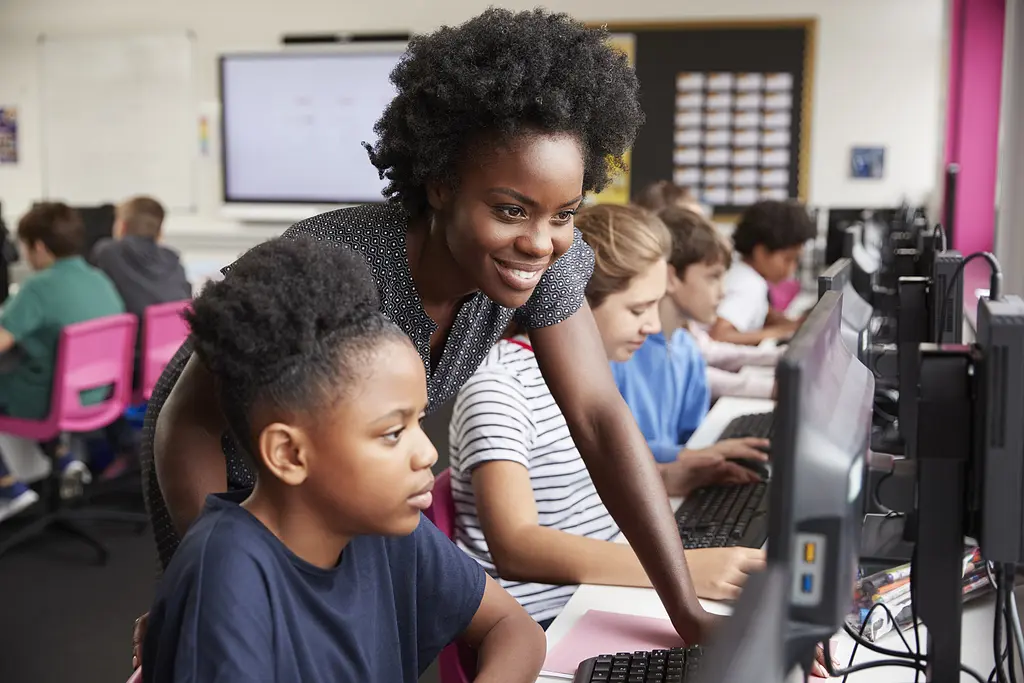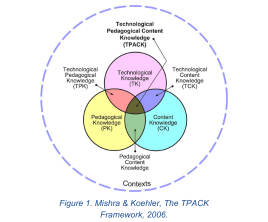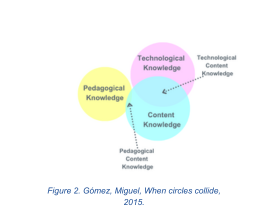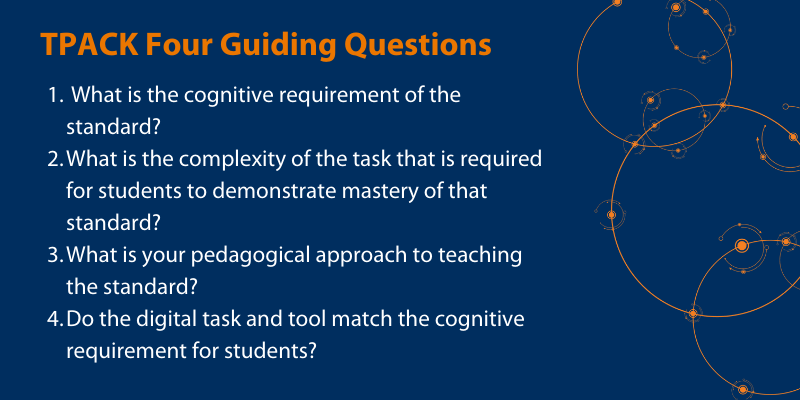
The Importance of Blended Learning
With the onset of the COVID-19 pandemic, teachers found themselves transformed into virtual instructors overnight, relying on virtual meeting platforms and learning management systems to engage students in learning. They considered new technology tools, such as Nearpod, Jamboard, and Flip, as a way to engage students and assess learning. In fall 2021, most educators returned to face-to-face classroom instruction. One benefit of the pandemic was that almost all school districts had drastically increased their access to technology devices, with many able to support 1-to-1 technology integration. This newfound understanding of instruction provided a unique opportunity to increase student engagement, increase support for diverse student needs, provide opportunities for student agency, and develop students’ future-ready skills. This blended approach to learning combines traditional face-to-face instructional strategies with the use of technology to enhance teaching and learning through a more personalized and flexible learning experience. All models for blended learning share the common foundational understanding that digital teaching and learning require the engagement of both teacher and student with technology integrated to enhance student control over time, place, path, and pace. The most important element, however, is still the connection between effective instruction and student learning.
Why Use the TPACK Framework for Blended Learning?
The TPACK framework, introduced by Punya Mishra and Matthew J. Koehler in 2006, recognizes the connections between teaching, technology integration, and student learning. The framework acknowledges that, for effective student learning to take place, the content (what you teach) and the pedagogy (how you teach) must match the technological task selection. The framework identifies seven areas of knowledge, with the goal of achieving the perfect utilization of content knowledge, pedagogical knowledge, and technological knowledge to create effective student lessons (Figure 1). The point where the seven areas of knowledge overlap provides optimal student learning while engaging students of diverse needs and preferences. In other words, TPACK represents the most effective approach to teaching in a technology-integrated classroom in a way that leads to student learning. The TPACK framework should be regarded as an essential component of any blended learning classroom, as effective learning requires the integrated application of teacher knowledge. As blended learning seeks to engage students and meet diverse student needs, successful implementation must include the intentional application of the TPACK framework.
technological task selection. The framework identifies seven areas of knowledge, with the goal of achieving the perfect utilization of content knowledge, pedagogical knowledge, and technological knowledge to create effective student lessons (Figure 1). The point where the seven areas of knowledge overlap provides optimal student learning while engaging students of diverse needs and preferences. In other words, TPACK represents the most effective approach to teaching in a technology-integrated classroom in a way that leads to student learning. The TPACK framework should be regarded as an essential component of any blended learning classroom, as effective learning requires the integrated application of teacher knowledge. As blended learning seeks to engage students and meet diverse student needs, successful implementation must include the intentional application of the TPACK framework.
Why is TPACK important Now?
With newfound interest in blended learning, it is the perfect time to hone educators’ TPACK knowledge. Although many educators are familiar with the unique graphic and acronym, few have experience applying this framework. These TPACK areas of knowledge were used periodically for technology integration before the pandemic, but they are now a necessity for planning daily blended learning instruction.
Blended learning requires that teachers adopt a different pedagogical approach to teaching. Consequently, teachers must also approach planning differently. The approach may be unfamiliar, but it is anchored in a thorough analysis of the content standards, then appropriately paired with pedagogy and continues to serve as the foundation of the fundamental components of effective teaching. Blended learning is a sustainable educational practice that results in student proficiency only when technology tool choices are determined by the student learning target. The TPACK framework serves as the foundational conceptual framework of blended learning.
Supporting TPACK Knowledge Development in Blended Learning
Conceptual understanding of blended learning and the practice of educational technology as a whole are built on an understanding of the TPACK framework. However, TPACK framework utilization is founded in the lesson planning process, and the effectiveness of TPACK knowledge application varies by teacher and educational situation as teachers navigate the knowledge required for different contexts. For example, Figure 2 shows the TPACK imbalance that exists when a teacher is able to use technology to connect to the content topics (i.e., “what to teach”) but is struggling to understand how to connect the technology and content to the pedagogy (i.e., “how to teach”).  Educators need an understanding of how to use the TPACK Framework for planning blended learning lessons and support in understanding how different TPACK knowledge components may change from content area to content area or even from standard to standard. Development of TPACK knowledge should function as the foundational component of blended learning professional development and continue to develop through job-imbedded professional development provided through instructional coaching.
Educators need an understanding of how to use the TPACK Framework for planning blended learning lessons and support in understanding how different TPACK knowledge components may change from content area to content area or even from standard to standard. Development of TPACK knowledge should function as the foundational component of blended learning professional development and continue to develop through job-imbedded professional development provided through instructional coaching.
Self-Assessment and Coaching
Teacher fluency requires support for the development of each component of TPACK knowledge (content knowledge, pedagogical knowledge, technological knowledge, technological content knowledge, technological pedagogical knowledge, pedagogical content knowledge, and TPACK) to enable teachers to develop solutions that lead to effective teaching in any situation. TPACK knowledge can be analyzed with a simple Self-Reflection exercise. This information helps teachers identify knowledge areas that may need attention or additional support needed to plan effective lessons. This tool can also serve as a foundation for teacher goal setting; as a part of an instructional coaching cycle; or to gather information on program, school, and district professional learning needs. Try the TPACK Self-Assessment Tool.
Lesson Planning with the TPACK Framework
Teachers’ implementation of the core elements of the TPACK framework can be developed and reinforced during the lesson planning process with the inclusion of four guiding questions. Teachers should use these questions to structure the lesson planning process:

These questions are included in the TPACK Lesson Planning Companion, which also includes a graphic that can be added to any lesson plans as a support for the foundational components of the TPACK framework.
Blended learning combines the timeless practices of the traditional classroom with the benefits of online learning to create a learning environment that increases opportunities for personalized learning while preparing future-ready learners. However, this instructional approach is only successful if technology is an essential tool for meeting learning targets and not a novelty. With a renewed commitment to the foundational constructs of effective teaching (content and pedagogy), combined with a new knowledge of technology integration, school leaders empower educators to prepare lessons that effectively support student learning.
Learn how you can support effective blended learning in your school.
